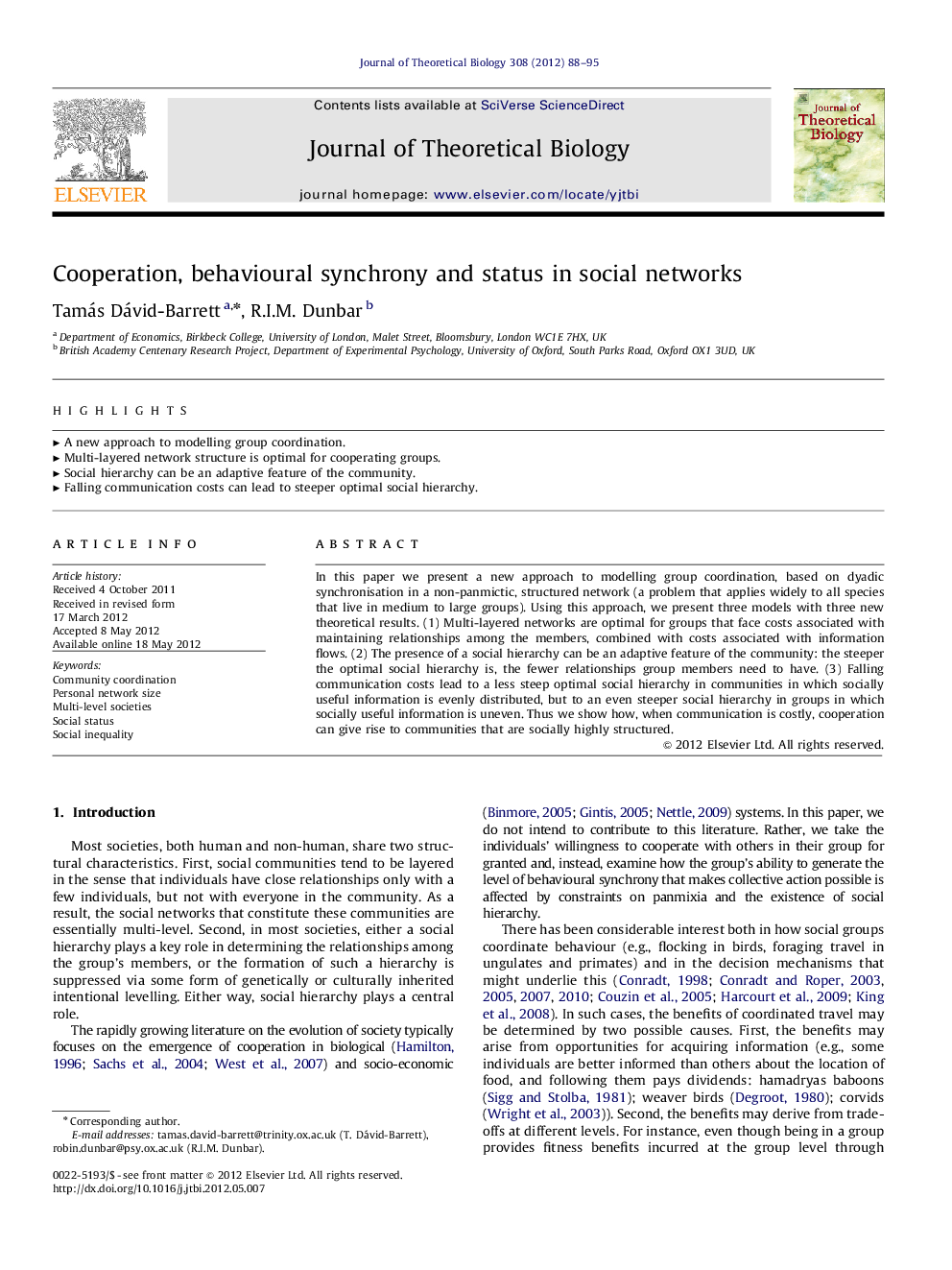| Article ID | Journal | Published Year | Pages | File Type |
|---|---|---|---|---|
| 4496651 | Journal of Theoretical Biology | 2012 | 8 Pages |
In this paper we present a new approach to modelling group coordination, based on dyadic synchronisation in a non-panmictic, structured network (a problem that applies widely to all species that live in medium to large groups). Using this approach, we present three models with three new theoretical results. (1) Multi-layered networks are optimal for groups that face costs associated with maintaining relationships among the members, combined with costs associated with information flows. (2) The presence of a social hierarchy can be an adaptive feature of the community: the steeper the optimal social hierarchy is, the fewer relationships group members need to have. (3) Falling communication costs lead to a less steep optimal social hierarchy in communities in which socially useful information is evenly distributed, but to an even steeper social hierarchy in groups in which socially useful information is uneven. Thus we show how, when communication is costly, cooperation can give rise to communities that are socially highly structured.
► A new approach to modelling group coordination. ► Multi-layered network structure is optimal for cooperating groups. ► Social hierarchy can be an adaptive feature of the community. ► Falling communication costs can lead to steeper optimal social hierarchy.
